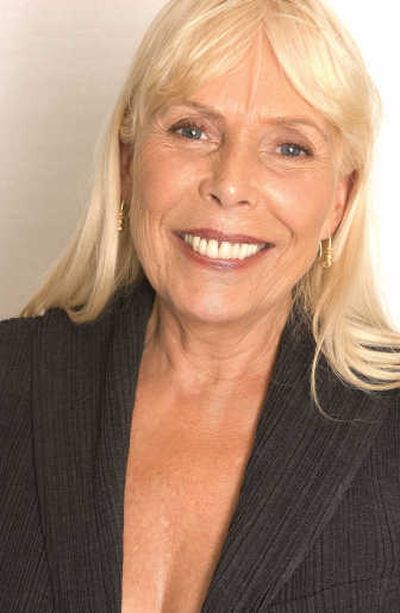Mitchell finds time to ‘Shine’

A few years ago, Joni Mitchell had rejected her muse, refusing to write or even play music as she devoted her life to painting, watching old movies on TV and reconnecting to the daughter she had given up for adoption in 1965.
Now, at age 63, newly inspired by family, nature and anger at today’s politics, Mitchell is enjoying an outburst of creativity.
The iconic Canadian singer-songwriter – whose poetic verses on songs like “Both Sides, Now” have inspired countless musicians from Madonna to Wayne Shorter – late last month released “Shine,” her first album of new songs in nearly a decade.
The Rock and Roll Hall of Famer says it wasn’t difficult to put aside music for most of the past decade.
“I was a painter first, but I got waylaid by the music – first as a hobby to make my smokes at art school,” says Mitchell, speaking in a slightly husky voice as she chain-smokes American Spirit cigarettes, a habit she developed at age 9 after nearly dying from polio.
“At the time, I just sang folk songs but then a tragedy occurred in my life. I had a daughter and I gave her up and that puts a big hole in a woman that’s hard to explain.”
Mitchell’s first album, “Song to a Seagull,” came out three years later, in 1968. She enjoyed her biggest commercial success in the early ‘70s as she exposed her emotional vulnerabilities on such albums as “Blue” and “Court and Spark.”
Then she turned to unorthodox harmonies, jazz and world music, and edgier social commentaries, starting with 1975’s “The Hissing of Summer Lawns.”
Mitchell released her last album with new material, “Taming the Tiger,” in 1998. Then she stopped writing songs, or even playing piano and guitar.
“I had gotten to hate music,” Mitchell says. “I didn’t listen to the radio … for my own pleasure or put records on. I couldn’t remember what I ever liked about it.”
She fulfilled her Warner Bros. contract with the orchestral albums “Both Sides Now” (2000) and “Travelogue” (2002), on which she sang jazz standards and her old songs like “Woodstock” and “A Case of You.” Then she “slipped off” into retirement.
Mitchell began to rethink her decision to quit music in 2005, after Starbucks Entertainment invited her to compile an Artist’s Choice album of the recordings that most influenced her.
She spent six months reviewing “everything that ever gave me a major buzz” – from classical (Debussy) to jazz (Miles Davis and Billie Holiday) to rock (Chuck Berry) and folk (Bob Dylan).
Then, one summer’s day in 2005, she found her muse again.
She had spent the day outside her rustic stone home on her coastal property north of Vancouver, B.C. She could see the Pacific Ocean rolling in, a blue heron flying overhead, seals sprawled in the kelp, wild roses blooming.
“I was going, ‘This is so beautiful,’ ” she recalls. “That evening I went in and played this piece of music (on the piano). … There was such a sense of well-being and gratitude.”
That piano melody ended up as the impressionistic, Debussy-inspired instrumental “One Night Last Summer,” which opens “Shine.”
The lyrics and melodies began flowing. “Bad Dreams” developed out of a profound remark by her 3-year-old grandson: “Bad dreams are good in the great plan.” “Night of the Iguana” and “Hana” reflect her passion for old movies.
Other songs, like “Strong and Wrong,” grew out of the anger she felt over the current state of affairs: the war in Iraq, global warming, torture and illegal wiretapping.
Those concerns have carried beyond her music. The new film “The Fiddle and the Drum” (scheduled for Oct. 22 broadcast on Bravo) is an anti-war ballet based on Mitchell’s songs that she co-created with Alberta Ballet choreographer Jean Grand-Maitre.
And she has a gallery exhibition, “Green Flag Song,” of pieces focused on the themes “war, torture, revolution” created from ghostly green-and-white negative images photographed off her dying TV set.
While Mitchell does not plan to perform publicly, she’s optimistic about writing more music.
“I’ve got some ideas,” she says. “It’s up to the muse, right?”